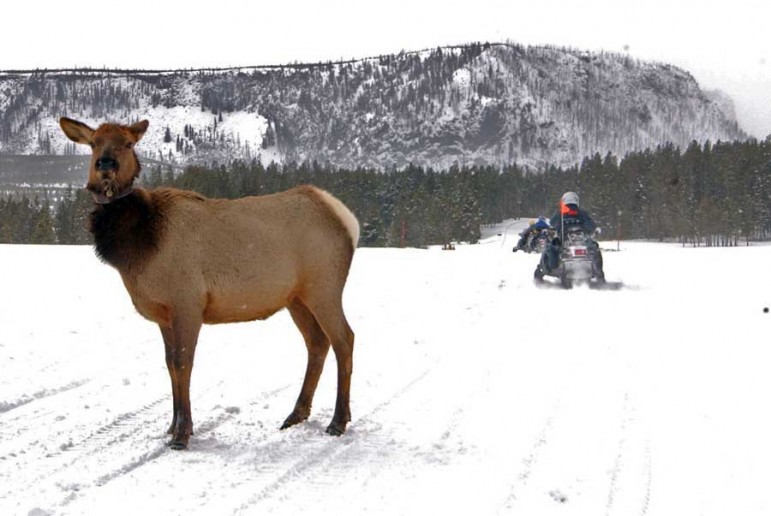
The long slog toward resolving more than a decade of legal conflicts over snowmobiles in Yellowstone National Park took another procedural step forward Wednesday, as the National Park Service issued a formal record of decision that marks the end of the planning process that will govern over-snow travel in the park.
Winter use for 2013-14 will follow the same rules as the past four years, with up to 318 snowmobiles and 78 snow coaches allowed in the park each day.
If the new plan is not met with legal challenges—or survives any that arise—then the 2014-15 winter season will see traffic managed under a new process that governs so-called “transportation events,” rather than setting limits for specific numbers of sleds or coaches.
“I think we have a fighting chance,” Yellowstone Superintendent Dan Wenk said Thursday of the plan’s prospects for avoiding or withstanding courtroom entanglements.
A long process of meeting with stakeholders, outreach to gateway communities and fine-tuning data and studies has yielded a plan that not just Wenk, but most other players, believe is likely to pass muster.
“What we’re hearing is that this is a plan that may not have given any of them all that they wanted, but it’s one that could work,” Wenk told Yellowstone Gate in a telephone interview Thursday.
He said the extra time it took to create a supplemental Environmental Impact Statement and offer extensions for public comment made him “more confident than I would have been two years ago that this is a far more defensible plan.”
“This plan and this rule will allow for Yellowstone National Park to be quieter and cleaner, and to allow an increase in visitation from what was previously allowed,” he said.
The plan closely mirrors a draft version released last year. It will manage snowmobile and snow coach traffic by allowing up to 110 so-called “transportation events” each day. On average, that will mean average daily limits of approximately 50 groups of around seven snowmobiles each and a total of 60 snow coaches entering one-at-a-time. Travel over Sylvan Pass will continue under existing guidelines.
A new pilot program will let one non-commercial guide take up to four guests daily through each gate. Details of that program will be worked out later, but guides must pass an online course, and will use a government web site to reserve entry dates based on a lottery system.
Wenk said the noise and air quality targets for best-available-technology snowmobiles that were to have been phased in by 2017 will already be met by one of the newest models produced by manufacturer Ski-Doo.
The new plan has adaptive management provisions that will allow for tweaks and adjustments, Wenk said. But more importantly, it is focused on measuring and mitigating the effects of winter travel, rather than on the relative merits of one set of maximum permitted vehicle numbers over another.
“This is the most science-based impact analysis we’ve done,” he said.
A federal regulation detailing the implementation and timing of key dates outlined in the final plan will be published in the fall. That’s when dissatisfied groups have typically filed court challenges to past plans, and will prove to be a key period for determining whether the current plan survives.
Contact Ruffin Prevost at 307-213-9818 or [email protected].
Yellowstone Park winter use plan record of decision 2013 (Text)
